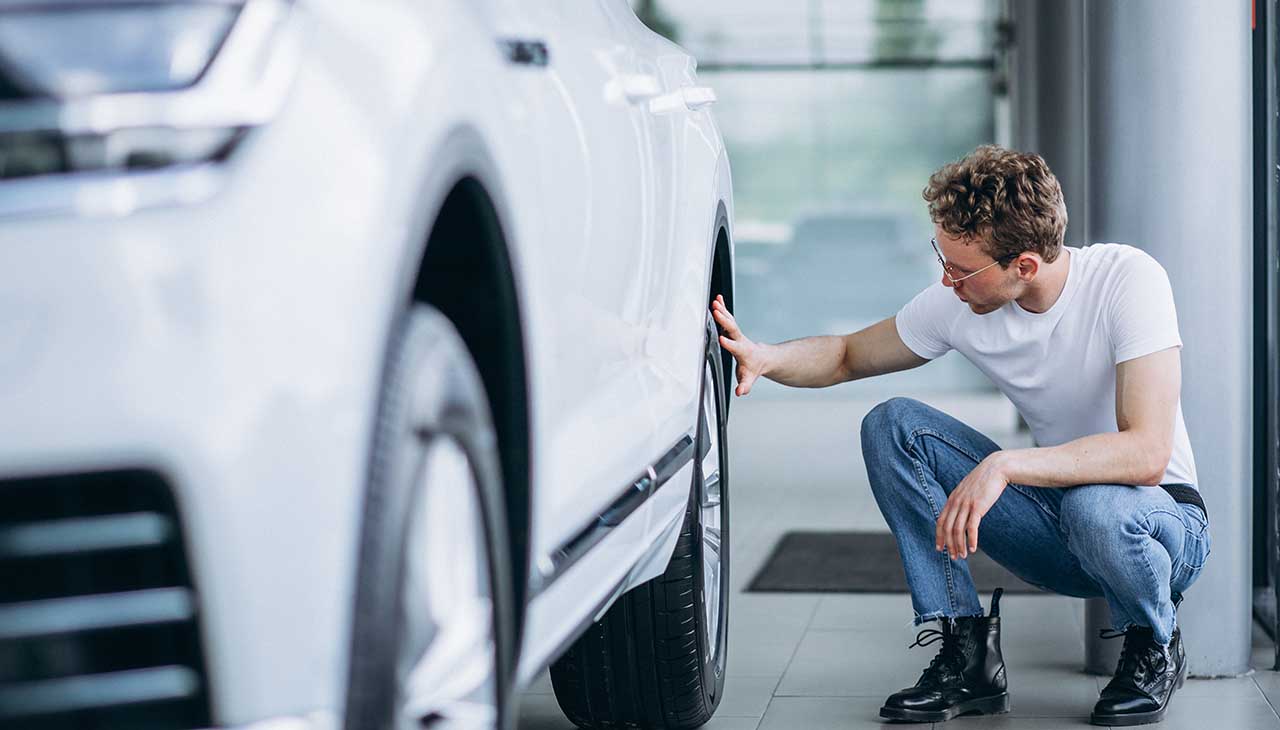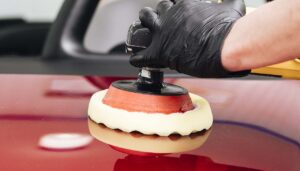
Man looking for a car in a car showroom
Scratches on your car’s finish are not just unsightly; they can also reduce your vehicle’s value. Whether caused by an errant shopping cart, an enthusiastic pet, or wayward branches, these blemishes are a common issue for car enthusiasts and vehicle owners alike. But fear not! This comprehensive guide will show you the most effective methods for scratch removal, helping you restore that flawless finish.
Understanding Car Scratches
The Common Issue of Car Scratches
Scratches are inevitable for anyone who spends time driving. They can occur from a variety of sources including road debris, careless parking, or even during routine washes if the tools used are abrasive. Understanding the underlying problem is the first step in addressing it effectively.
Types of Car Scratches
Not all scratches are created equal. Identifying the type of scratch is crucial in determining the right remedy.
Surface Scratches
Surface scratches only affect the outermost layer of your car’s paint. They are often the result of light contact and can usually be resolved with minimal effort.
Clear Coat Scratches
Clear coat scratches penetrate deeper than surface scratches but do not reach the colored paint layer. These types tend to be more noticeable, especially under direct sunlight.
Deep Scratches
Deep scratches extend through the clear coat and into the paint layer or even the primer. These are the most challenging to fix and often require professional intervention.
Methods for Scratch Removal
DIY Techniques for Minor Scratches
For car owners willing to tackle minor scratches themselves, there are several DIY methods available that are both cost-effective and straightforward.
Using Toothpaste for Surface Scratches
Surprisingly, non-gel toothpaste can be an effective solution for minor surface scratches. The mild abrasive properties help polish away the scratch, restoring a smooth finish. Simply apply a small amount to a damp cloth and rub gently in a circular motion before rinsing off.
Scratch Removal Kits
Scratch removal kits are readily available at auto parts stores and come equipped with everything you need to fix minor scratches. These kits typically include a rubbing compound, microfiber cloth, and polishing pads. Follow the included instructions for best results.
Baking Soda Paste
Mixing baking soda with water to form a paste can also work wonders on light scratches. Apply the paste to a soft cloth and rub gently over the scratch. The abrasive quality will help buff out the imperfections without causing further damage.
Professional Services for Deeper Scratches
When dealing with deep scratches, professional services may be the best option. Here’s why:
Paint Matching and Blending
Professionals use advanced tools to ensure the repaired area matches the rest of your vehicle’s paint perfectly. This process often involves blending the new paint with the existing paint to create a seamless finish.
Specialized Equipment
Auto body shops have access to specialized equipment that can remove deep scratches more effectively than DIY methods. From high-powered buffers to professional-grade rubbing compounds, these tools make a noticeable difference.
Expertise and Experience
Trained technicians have the expertise to assess the severity of the scratch and recommend the best course of action. Their experience ensures that the job is done right the first time, saving you time and potential frustration.
Step-by-Step DIY Scratch Removal Guide
Materials Needed
To tackle scratch removal at home, gather the following materials:
- Non-gel toothpaste or baking soda
- Scratch removal kit
- Microfiber cloths
- Polishing pads
- Rubbing alcohol
Removing Surface Scratches
- Clean the Area: Start by washing the scratched area thoroughly to remove dirt and debris.
- Apply Toothpaste/Baking Soda: Apply a small amount of toothpaste or baking soda paste to a damp cloth.
- Polish Gently: Rub the cloth in a circular motion over the scratch. Be gentle to avoid further damage.
- Rinse and Repeat: Rinse the area and check your progress. Repeat if necessary.
Addressing Clear Coat Scratches
- Use a Scratch Removal Kit: Follow the instructions on your scratch removal kit. Apply the rubbing compound to a polishing pad.
- Buff the Scratch: Using the polishing pad, buff the scratch in a circular motion.
- Clean and Polish: Wipe away excess compound with a clean microfiber cloth and polish the area for a smooth finish.
Handling Deep Scratches
For deep scratches, it’s advisable to seek professional help, but if you’re determined to DIY, here’s a basic approach:
- Clean the Area: Wash and dry the scratched area.
- Apply Primer: Use a fine brush to apply a thin layer of primer to the scratch. Allow it to dry completely.
- Paint the Scratch: Using touch-up paint that matches your car’s color, carefully fill in the scratch. Apply multiple thin layers rather than one thick layer.
- Seal with Clear Coat: Once the paint dries, apply a clear coat to seal and protect the repair.
- Polish: Buff the area gently to blend the new paint with the existing finish.
Importance of Regular Car Maintenance
Preventing Future Scratches
Regular maintenance can prevent many scratches before they happen. Here are some tips:
- Frequent Washing: Regularly wash your car to remove dirt and debris that can cause scratches.
- Waxing: Apply wax to your car’s finish to add a protective layer.
- Safe Parking: Be mindful of where you park to avoid potential hazards like tight spots or overhanging branches.
Routine Inspections
Regularly inspecting your car allows you to catch scratches early when they are easier to fix. Make it a habit to check your vehicle’s finish every time you wash it.
Professional Detailing
Consider professional detailing services periodically. Detailing not only keeps your car looking great but also maintains the integrity of the paint and clear coat.
When to Seek Professional Help
Assessing the Damage
Not all scratches warrant professional intervention, but it’s important to know when to seek help. If the scratch is deep and penetrates the paint or primer, it’s best to consult a professional.
Cost vs. Benefit Analysis
Weigh the cost of professional repairs against the potential decrease in your car’s value if left untreated. Often, the investment in professional services pays off in the long run.
Trusting the Experts
Professional detailers have the expertise, tools, and materials needed to address deep scratches effectively. Trusting them ensures that the repair is permanent and blends seamlessly with the rest of your car’s finish.
Real-Life Success Stories
DIY Enthusiast Turned Pro
One car enthusiast, John, tried to fix a deep scratch himself but quickly realized it was beyond his skill level. After seeking professional help, he was amazed at the flawless finish and learned valuable tips for future DIY projects.
From Eyesore to Eye-Catching
A vehicle owner named Sarah had a large scratch on her car door from a shopping cart. She followed a step-by-step DIY guide using a scratch removal kit and was thrilled with the results. Her car looked as good as new!
Expert Intervention Pays Off
James, a small business owner, had a fleet of vehicles with numerous scratches. He decided to invest in professional detailing services. Not only did his vehicles look pristine, but he also noticed a boost in employee pride and customer perception.
Conclusion
Maintaining your car’s finish is essential for preserving its value and appearance. Whether through DIY methods or professional services, removing scratches can be straightforward and rewarding. Regular maintenance and prompt attention to scratches will keep your vehicle looking its best. Ready to restore your car’s finish? Start with these expert tips and see the difference today!





